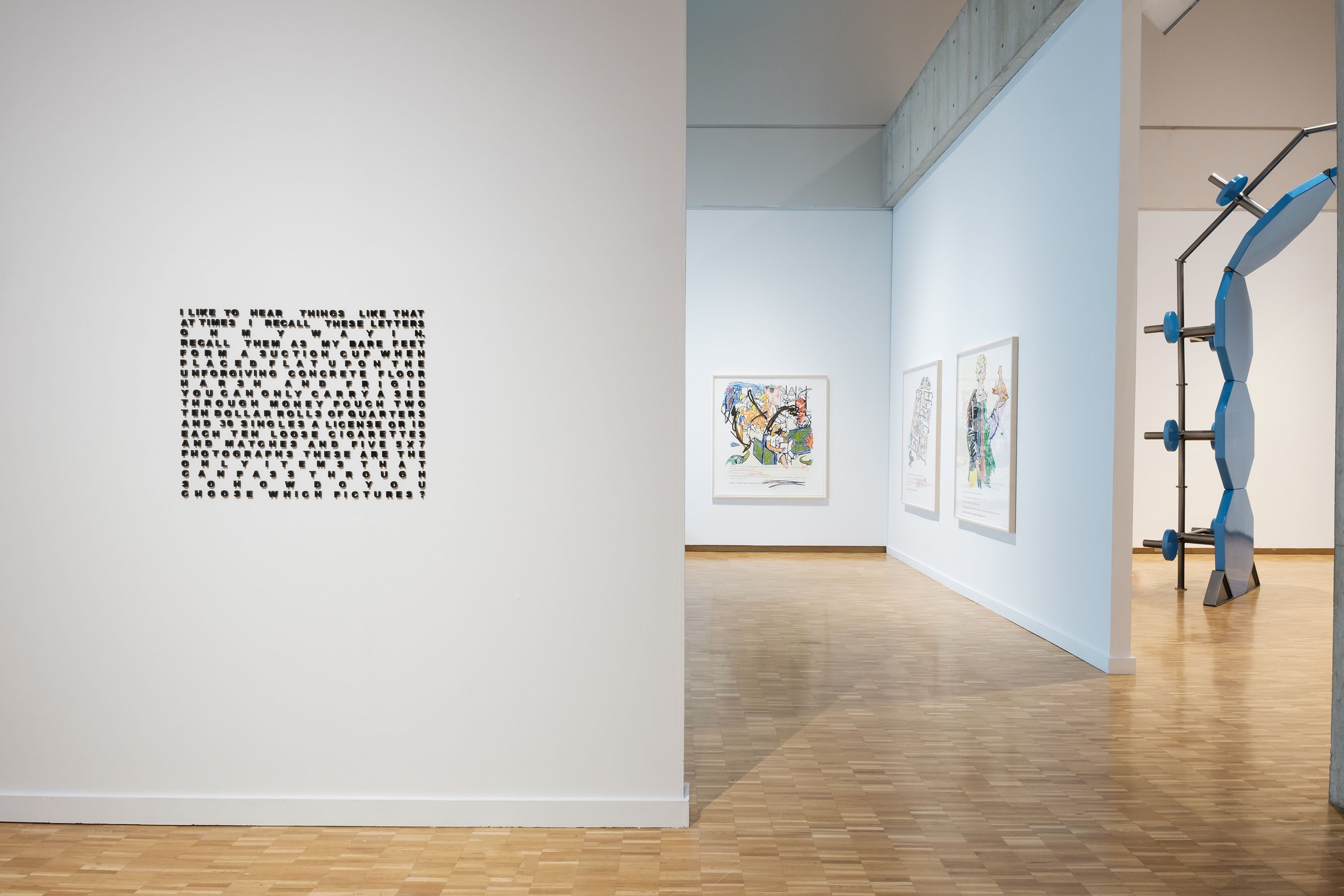
Using video, sculpture, photography and text, Sable Elyse Smith (b. 1986, Los Angeles, California) draws attention to the structures and systems that shape our lives. Smith points to the carceral, the personal, the political, and the quotidian to speak about a violence that is largely unseen—and potentially imperceptible.
Smith’s poetic, conceptualist approach seeks to make visible and visceral the effects of systemic exertions of trauma. Whether focusing our attention on specific systems of surveillance and structures of constraint or on the silent brutality that permeates everyday black life, many of Smith’s works connect us to her personal experience.
Some works speak directly to the prison and criminal justice systems as sites, at once familiar and foreign to many. A poetic text-object describes the protocols for prison visitation; a photographic object exposes the microeconomy built around inmate-visitor portraits; a found object, coloring book pages designed for children entering courtrooms, is scribbled on and scaled up; another found object, the kind of aluminum table common in prisons, is transformed into a monumental arch.
Other works point obliquely to the experience of subjected individuals and communities. A neon text referencing the internet phenomenon of “planking” asks us to consider the viral circulation of images of other bodies, facedown. A video of fragmented, non-narrative imagery weaves together generic, “urban” street scenes; footage of two white men undergoing tactical firearm training; excerpts from Charles and Ray Eames’ 1977 documentary, Powers of 10; and scenes of Smith’s father.
Whatever form it takes, Smith’s work attempts to materialize and aestheticize the words, sounds, gestures, and embodied experiences that characterize far-reaching cycles of violence and systems of control. As Sampada Aranke notes in her catalogue essay, Smith—in making these conditions noticeable and felt—encourages us to “reshape our perceptual, affective, and embodied modes of attention.” The artist provides a portal and invites us to pass through these emotional landscapes. She asks us to see with the hope that what we encounter cannot be unseen.


digital c-print, suede, artist frame, acrylic
48 x 40 in
122 x 101.5 cm

acrylic
30 x 34 in
76 x 86.5 cm



screen printing ink and oil stick on paper
60.5 x 56 in
153 x 142.5 cm

screen printing ink, graphite, oil pastel and oil stick on paper
60.5 x 56 in
153 x 142.5 cm

screen printing ink, oil pastel and oil stick on paper
60.5 x 50 in
153 x 127 cm

screen printing ink, oil pastel and oil stick on paper
60.5 x 50 in
153 x 127 cm


powder coated aluminum
172 x 144 x 68 in
437 x 366 x 173 cm

powder coated aluminum
172 x 144 x 68 in
437 x 366 x 173 cm

